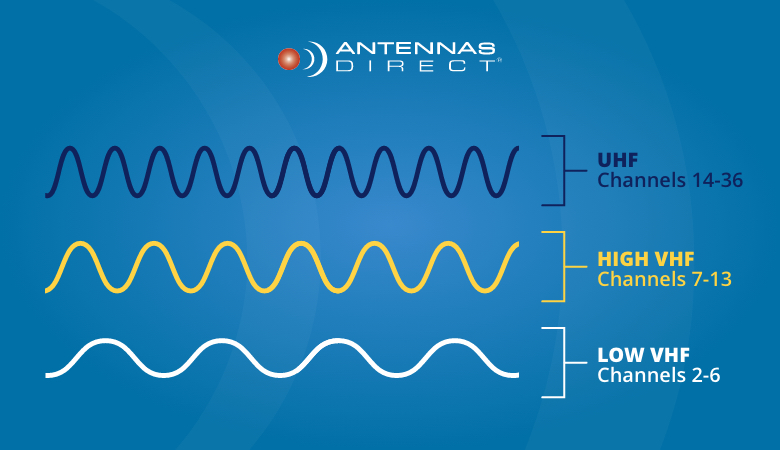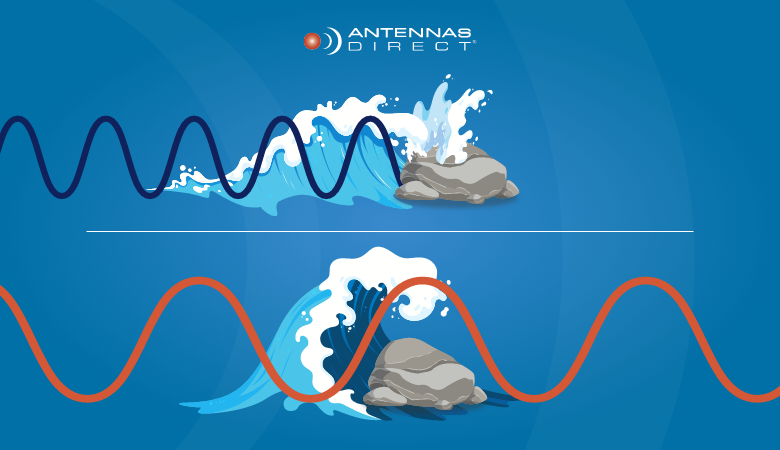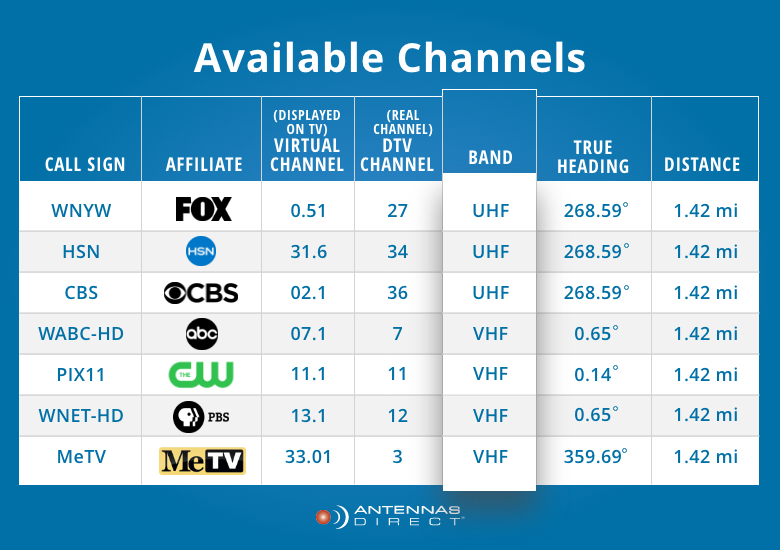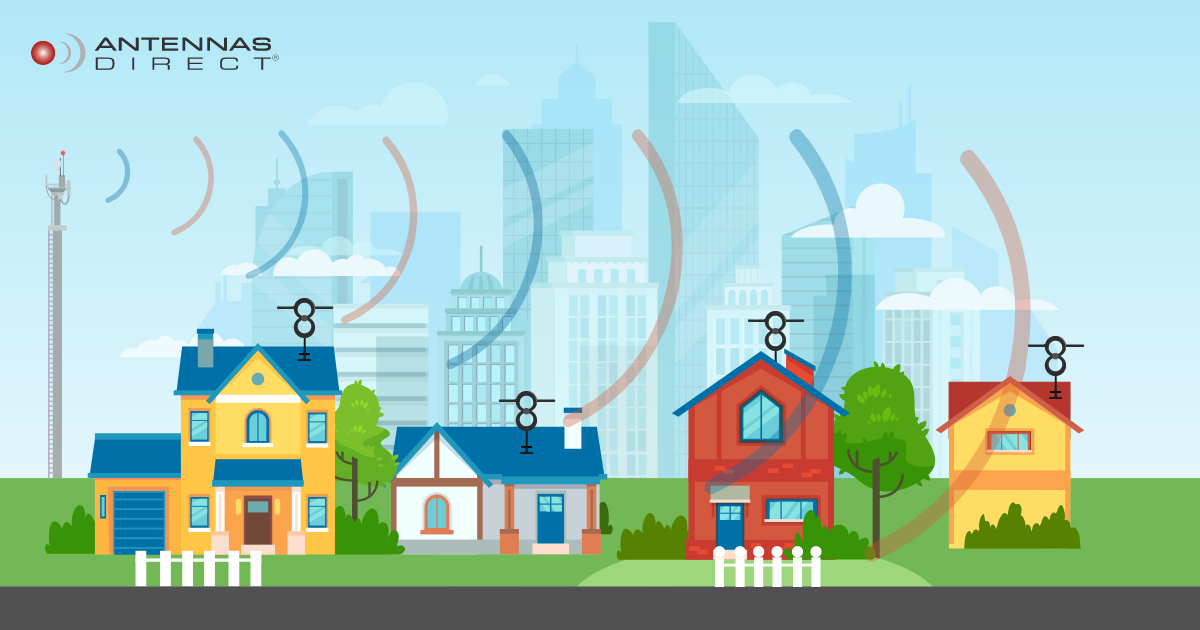Why you need to choose the right antenna with frequency in mind
The most important thing to consider when you’re buying an antenna is whether it’s suited to your needs. Most of all, this means determining your location, so that you know where your local over-the-air (OTA) broadcast towers are. Once you know your location, you’ll also know what frequency bands those towers are using to broadcast your local and network channels. Whether you are an enthusiastic cord-cutter or just beginning your journey to free TV, it is important to know how signal frequencies determine which TV antenna you need. Knowing what to look for when you choose an antenna will ensure you are not being ripped off by false range and/or signal claims. The whole point of cutting the cord is to save money, so you should only have to buy your antenna once! We’re here to clear the air.
Frequency bands: What you need to know
Wireless Internet, radio, home electronic devices, and more, all receive and emit signals, and they all have their own block of frequencies they use. This block, called a frequency band, is a segment of the full spectrum of the frequency domain. The segment is delimited by a higher frequency and a lower frequency. TV stations are given certain frequencies on which they transmit their broadcast (OTA) signals. These designated OTA frequency bands that TV antennas receive are UHF (ultra-high frequency) and VHF (very-high frequency).

Electromagnetic waves travel through the air from the broadcast towers and are received by your TV antenna, according to designated frequency bands. The frequency bands used for TV antennas (UHF & VHF) have unique qualities that allow you to receive signals from the TV towers for a certain group of TV channels. Reception of these frequency bands is related to wavelength. Think of it like this: a wave in the ocean is approaching a large boulder. If the wave is large and more spread out, its longer length means that it will suffer less disruption when it hits the boulder, and more water is able to make it over or around the obstacle. This is how VHF signals travel through and/or around obstacles between the TV towers and your TV antenna. Now, imagine a smaller wave. When this wave hits the boulder, its short length means that it is much more disrupted by the obstacle and less water will make its way over or around the boulder. This is how UHF signals are affected by obstacles and it is much easier for these signals to degrade over long distances. This is why elevating your TV antenna is so important, as this will always offer the best possibility of receiving your local broadcast signals and minimizing interruptions from obstacles in the terrain around you.

UHF signals cover broadcast channels 14-36. Because their wavelength is shorter, they are the most reliant on having a clear line of sight between your antenna and the nearby transmitter tower. Their short wavelength also means that they bounce more easily off interfering objects in their path to your antenna. Obstructions like mountainous areas, buildings, and heavy foliage like trees can affect the reception of these signals. Additionally, shorter wavelengths require smaller antenna elements for reception – which means a smaller antenna for you.
VHF signals cover 2 frequency bands. The Low-VHF band covers channels 2-6 and the High-VHF band covers channels 7-13. Because these signal wavelengths are longer than UHF signals, they can more easily bend over and around certain obstructions in the terrain between the TV broadcast tower and the receiving TV antenna. For example, they are better at reaching a TV antenna in hilly or mountainous areas. Since VHF signals have longer wavelengths, they require slightly larger VHF antenna elements to effectively receive them.
Finding Signals in Your Area
Use our Transmitter Locator tool by entering your zip code and you will see a list of the TV channels you can receive based on your nearby transmitter (broadcast) towers. The results will show you what frequency bands are being used in your area to transmit your network and local channels. With this information, you are armed with the knowledge you need to pick out your new TV antenna. Choosing the right antenna for you is what makes it possible to successfully cut the cord, once and for all. You can also use our free Antenna Point app on iOS and Android devices.

Now that you know more about UHF and VHF frequencies, it’s time to find which antenna works best for you! Regardless of where in the country you live, you will get the best reception from the only TV antennas specifically designed for the broadcast signals used in North America. Our selection of HDTV antennas is accessible, easy to install, and has the highest verified success rates in the industry for receiving both UHF and High-VHF frequencies.
If you have any questions about finding the perfect antenna for your location and installation needs, contact our experts, the Connection Crew. They are available 7 days a week to offer guidance and a free home-signal analysis, either by phone or live chat on our website.
Welcome to the Antennas Direct cord-cutting family!
